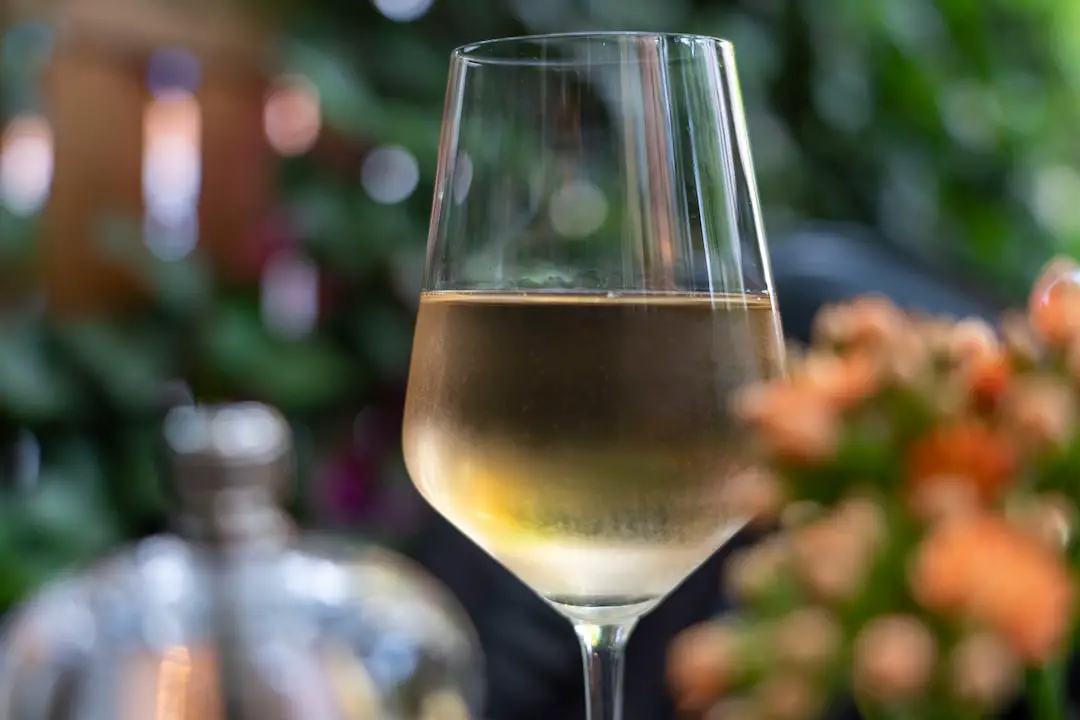If you’re a wine lover, you know that wine is more than just a drink – it’s a complex and nuanced beverage that can be enjoyed in many different ways. But have you ever stopped to think about what goes into making a great bottle of wine?
Wine is made from a combination of ingredients, each of which plays a key role in the final product. At the heart of any good wine is the grape. Grapes are the foundation of wine, providing the sugars and acids that are essential for fermentation. But not all grapes are created equal – different varieties of grapes have different flavor profiles and levels of acidity, which can influence the final taste of the wine.
In addition to grapes, wine makers use a variety of other ingredients and techniques to create the perfect balance of flavors. From yeast to sulfur dioxide, there are many elements involved in the art and science of wine making. So, let’s take a closer look at the ingredients that make wine so special.
Table of Contents
Grapes: The Foundation of Wine
You can’t have wine without grapes, they’re the very foundation of this delicious beverage you love to enjoy.
Wine grapes are different from table grapes; they’re smaller, sweeter, and have more seeds. Harvesting techniques play an important role in the quality of the grapes used in wine-making. Grapes are harvested at different times depending on the type of wine being produced. For example, grapes used to make white wine are harvested earlier than those used to make red wine.
Hand-picking is the most traditional method, but nowadays, machines are also used to harvest grapes. Grape varieties also play a significant role in the taste and aroma of wine. There are thousands of grape varieties used to make wine, but only a few are commonly used.
The most popular wine grape varieties include Chardonnay, Cabernet Sauvignon, Merlot, and Pinot Noir. Each variety has its own unique characteristics that contribute to the final product. The type of soil, climate, and growing conditions also influence the grape’s flavor.
Now that you’ve an understanding of the importance of grapes in wine-making, let’s move on to the role of yeast in fermentation.
The Role of Yeast in Fermentation
Now, let’s talk about how yeast plays a crucial role in turning grape juice into the flavorful and intoxicating beverage we all know and love.
Yeast is a type of fungi that consumes sugar and releases alcohol and carbon dioxide as byproducts. When making wine, yeast selection is important as different strains can produce different flavor profiles. Some winemakers use natural or wild yeast, while others choose to use cultured yeast. The fermentation temperature also plays a role in the final product, as a warmer temperature will produce a fruitier wine while a cooler temperature will produce a more subdued flavor.
To start the fermentation process, yeast is added to the grape juice and left to ferment for several days to several months depending on the desired style of wine. During this time, the yeast will consume the sugar in the grape juice and release alcohol and carbon dioxide.
The winemaker will monitor the fermentation process closely to ensure that it is going smoothly and adjust the temperature and other factors as needed. Once the fermentation is complete, the wine is racked, or transferred to another container, to separate it from any remaining yeast or sediment.
Moving on to the next section, other additions such as sulfur dioxide and more can also play a role in the final product.
Other Additions: Sulfur Dioxide and More
Let’s explore how some additional elements can contribute to the unique taste and quality of your favorite bottle of wine, including sulfur dioxide and other additives.
Wine preservation techniques have been used for centuries to ensure the longevity of this beloved beverage. Sulfur dioxide is a common addition during wine production, as it helps preserve the wine’s freshness and prevents oxidation. It also acts as an antimicrobial agent, inhibiting the growth of unwanted bacteria and yeasts that can spoil the wine.
Apart from sulfur dioxide, alternative additives for wine production are also being explored. For example, some winemakers use enzymes to enhance the wine’s flavor and aroma. These enzymes can help break down certain compounds in the grapes and improve the wine’s overall balance. Other additives, such as oak chips or staves, can impart unique flavors and aromas to the wine.
However, it is important to note that while some of these additives are allowed in certain regions, others may be prohibited by law.
Now, let’s move on to the factors influencing flavor and aroma.
Factors Influencing Flavor and Aroma
Discover how various factors influence the delicious flavor and aroma of your favorite bottle of wine.
Apart from the grapes and additives, there are other factors that contribute to the taste and scent of wine. One such factor is the aging process, wherein the wine is stored in barrels or bottles for a certain period, allowing it to develop its unique characteristics. The longer the aging process, the more complex and refined the wine becomes, resulting in a fuller body and more intense flavors.
Another key factor that influences the taste and aroma of wine is the terroir influence. Terroir refers to the natural environment where the grapes are grown, including the soil, climate, and topography. Different terroirs produce different grape varieties, which in turn affect the taste and aroma of the wine.
For example, grapes grown in cooler climates tend to have higher acidity and more subtle flavors, while those grown in warmer regions are bolder and fruitier. Understanding the terroir influence can help you choose the right bottle of wine for your palate.
As you can see, the flavor and aroma of wine are influenced by many factors, including the aging process and terroir influence. Understanding these factors can help you appreciate the art and science of winemaking and make informed decisions when choosing your next bottle.
The Art and Science of Wine Making
Winemaking is both an art and a science, requiring a perfect balance of creativity and precision. Did you know that in the US alone, the wine industry generates around $219.9 billion in economic activity annually?
The process of making wine involves a lot of science. From the chemical reactions that occur during fermentation to the importance of pH levels in the final product. However, there is also an art to winemaking. Winemakers must use their senses to determine the perfect balance of flavors and aromas.
To make wine, winemakers use a variety of equipment, including crushers, presses, and fermenters. They carefully select the type of yeast used in the fermentation process. Different strains of yeast can affect the flavor of the wine.
Aging and storage techniques also play a crucial role in the final product. Some wines are aged in oak barrels, which can add flavors like vanilla and spice to the wine. Others are aged in stainless steel tanks, which help preserve the natural flavors of the grapes.
Overall, winemaking is a complex process that involves both science and art. The final product is a testament to the skill and creativity of the winemaker.
Frequently Asked Questions
What are the best types of grapes to use for making wine?
When it comes to making wine, the type of grape varieties used can greatly impact the final product. Some of the best grape varieties for making wine include Cabernet Sauvignon, Pinot Noir, Chardonnay, and Riesling.
These grapes are known for their unique flavors and characteristics, which can be enhanced with the right harvest techniques. For example, harvesting grapes at night can help preserve their natural acidity and aroma.
Ultimately, the best grape variety and harvest technique will depend on the desired style and flavor profile of the wine being produced.
How does the region where the grapes are grown affect the taste of the wine?
When it comes to wine, the region where the grapes are grown can have a huge impact on the taste.
Climate influence is one of the biggest factors, as the temperature, precipitation, and sunlight all affect how the grapes grow and develop. For example, grapes grown in cooler regions tend to have higher acidity and more subtle fruit flavors, while those grown in warmer regions are fuller-bodied with richer, more intense flavor profiles.
Soil composition is another important factor, as it affects the nutrients available to the grapes and can contribute unique mineral flavors to the wine.
So, whether you prefer a crisp, acidic white or a bold, tannic red, the region where the grapes are grown plays a crucial role in the final product.
Can you make wine without adding yeast?
If you’re interested in making wine without adding yeast, you’ll need to rely on natural fermentation. This means that the yeasts present in the grapes will be responsible for converting the sugar into alcohol.
While this method can produce unique and interesting flavors, it’s important to note that it’s also unpredictable and can result in spoilage. Some winemakers have experimented with alternative methods, such as using honey or other sources of sugar to kickstart fermentation, or even using specific strains of bacteria to achieve desired flavors.
Ultimately, whether or not you can make wine without adding yeast depends on your willingness to experiment and your ability to control the fermentation process.
What is the difference between red and white wine in terms of flavor and aroma?
Indulge in the sweet, fruity aroma of wine, as you learn about the differences between red and white wine.
Wine production is a meticulous process that requires a deep understanding of winemaking techniques.
When it comes to flavor, red wine is known for its rich, bold taste, while white wine is more delicate and crisp.
Red wine is typically made from red or black grapes, and the skin of the grape is left on during fermentation, giving it a deep hue.
Conversely, white wine is made from green grapes, and the skin is removed before fermentation, resulting in a lighter color.
Both wines vary in their taste and aroma due to factors such as grape variety, region, and winemaking techniques used.
How long does it take to make a good quality wine?
To make a good quality wine, the fermentation process and aging techniques are crucial. Depending on the type of wine, the fermentation process can take anywhere from a few days to several weeks. During this time, yeast consumes the sugar in the grapes, producing alcohol and carbon dioxide.
After fermentation, the wine is aged in barrels or tanks to develop its flavor and aroma. The length of time the wine is aged depends on the winemaker’s preference and the type of wine being produced. For example, some red wines are aged for several years, while most white wines are aged for a shorter period.
Ultimately, the quality of the wine is determined by the winemaker’s expertise in balancing the fermentation process and aging techniques to create a delicious and well-rounded final product.
Conclusion
Congratulations! You now know the basic ingredients used to make wine. But remember, the quality of the grapes, the type of yeast used, and the addition of other ingredients such as sulfur dioxide all play a role in the final product.
And let’s not forget about the factors that can influence the wine’s flavor and aroma, such as the climate, soil, and winemaker’s techniques.
As the famous saying goes, ‘In vino veritas’ or ‘in wine, there is truth.’ Wine has been enjoyed for centuries, and the art and science of winemaking continue to evolve.
So next time you enjoy a glass of wine, take a moment to appreciate the careful craftsmanship and attention to detail that went into its creation. Cheers to the delicious world of wine!





